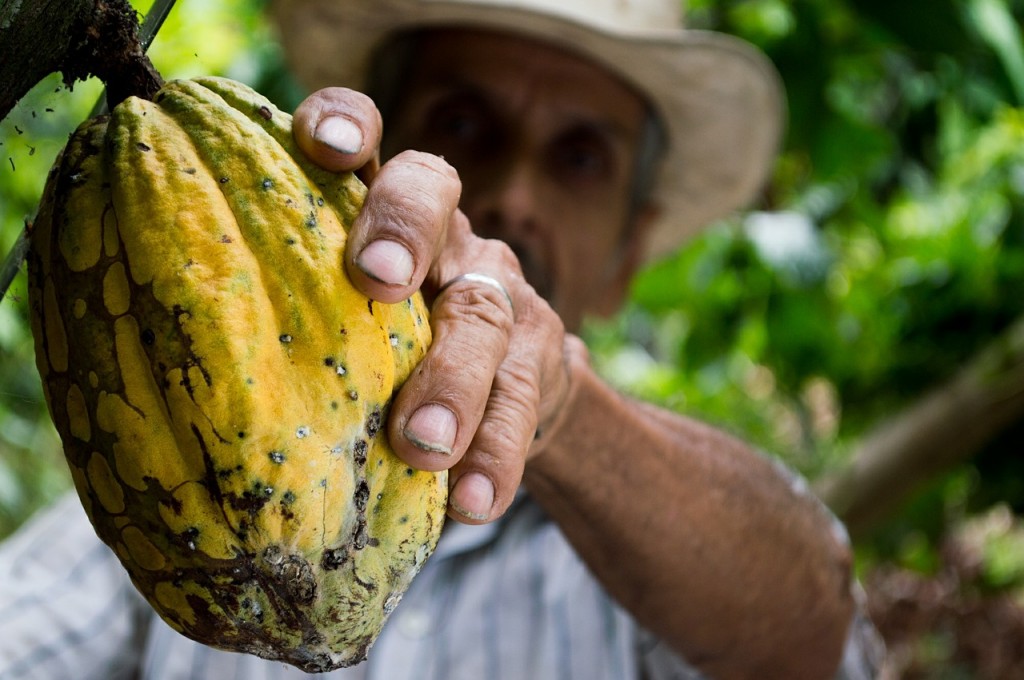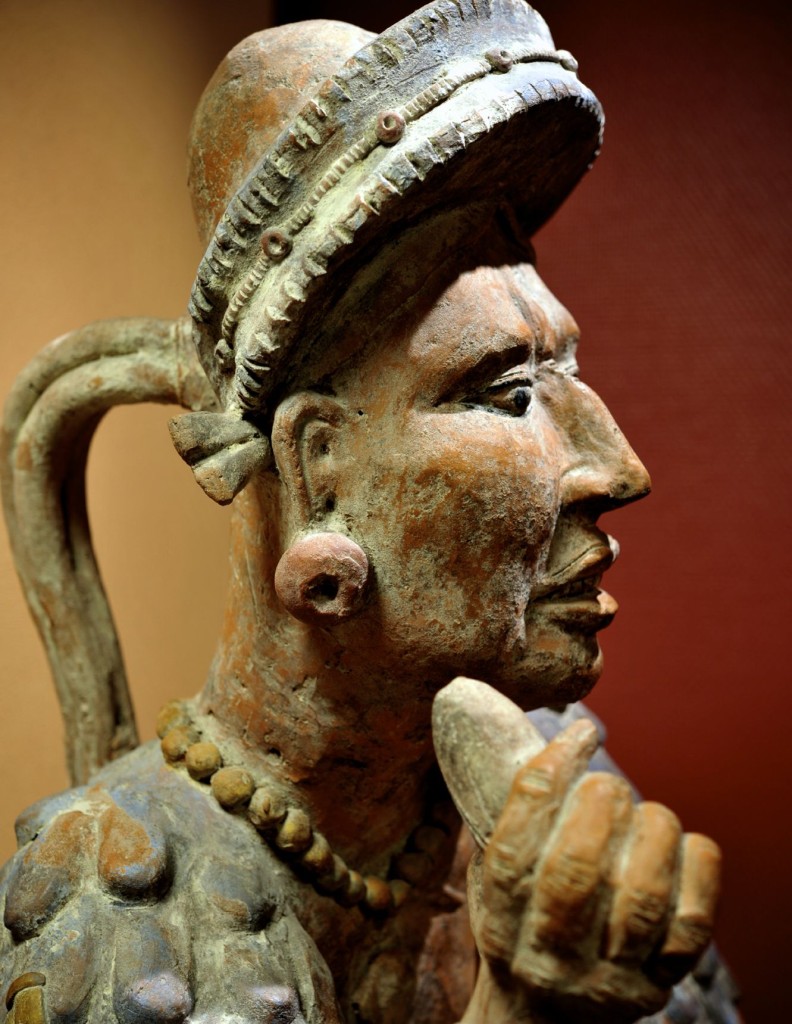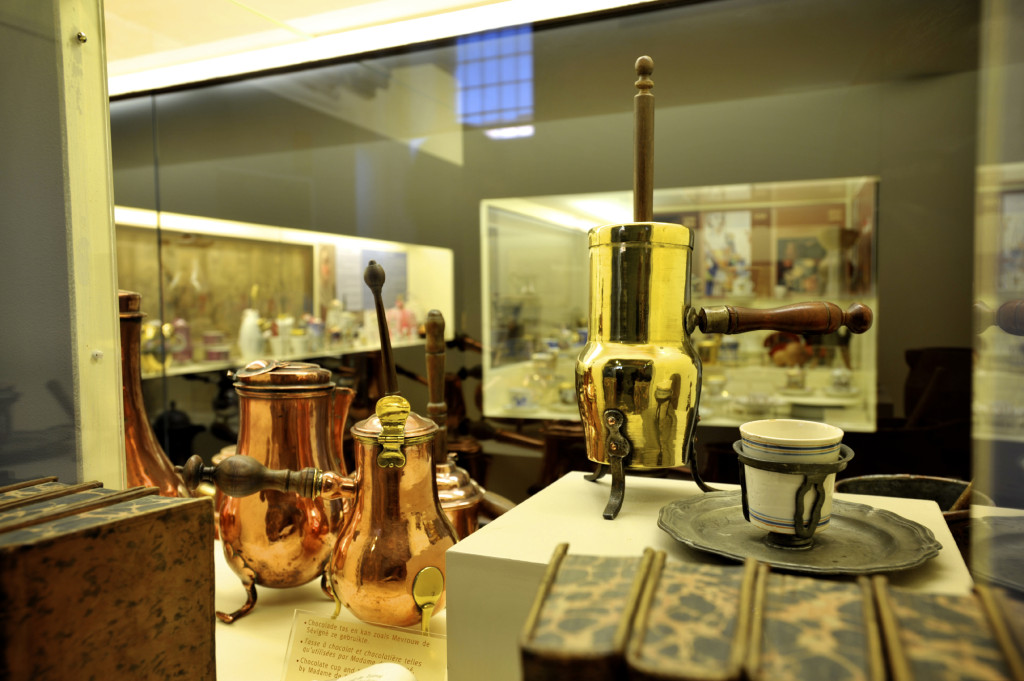My, my. Could a connotation to a food product be more flattering and mollifying than the one attributed to chocolate? It is a scientifically corroborated happy-maker! Endorphins – hormones produced by the human brain – make you see the bright side of life even on a grey November day. Heaven knows what else is triggered by the miraculous components chocolate evidently contains. Speculations are manyfold. Hips and pouch? Rumour! Just succumb to the temptation! Chocolate also works wonders as an antidote, should a guilty conscience creep up after unbridled indulgence. It is a virtuous circle indeed. Chocolate, respectively the use of cocoa beans, looks back on a history of nearly 4000 years. It has been a long way from the heaven-sent bitter drink Maya and Aztec civilisations consumed, to the solid sweet treat of our day. The Chocolate Museum of Bruges in Belgium unravels die development of the mysterious substance and its long voyage from Central America to far-away Europe.

This Columbian farmer holds up the source for solid and drinking chocolate. One cocoa pod contains between 20 and 50 seeds = cocoa beans.
Cocoa: Aphrodisiac? Magic potion?
The groundbreaking novelty uncovered by the Maya, Tchocoatl (bitter water), kept following generations devoted to its truly existing properties – enhanced by their beliefs and superstition. The god Quetzalcoatl (Feathered Snake) had a crucial role in the history of cacao and is said to be the great master teaching humans to cultivate and prepare Tchocoatl, an unpleasantly tasting brew.
 History has it that Aztec ruler Moctezuma drank up to 50 cups of spiced cacao every day, especially when he planned a visit to his harem. Casanova also allegedly relied on imbibing drinking chocolate (yet enhanced by fizzy Champagne) to satisfy his large female community; Madame du Barry administered the liquid to her suitors so they would match her perseverance. If that is true we do not know. For obvious reasons, the church – old spoilsports! – forbade the consumption of the sinful outlandish substance – at least for the common people.
History has it that Aztec ruler Moctezuma drank up to 50 cups of spiced cacao every day, especially when he planned a visit to his harem. Casanova also allegedly relied on imbibing drinking chocolate (yet enhanced by fizzy Champagne) to satisfy his large female community; Madame du Barry administered the liquid to her suitors so they would match her perseverance. If that is true we do not know. For obvious reasons, the church – old spoilsports! – forbade the consumption of the sinful outlandish substance – at least for the common people.
Exotic no more: Cocoa for everyone

A luxurious drink served in bespoke vessels: at the end of the eighteenth century, drinking chocolate was a privilege reserved for Europe’s nobility, the bourgeoisie and the clergy. Chocolate in a solid state still had to be invented.
Christopher Columbus was the first European to sample Tchocoatl in 1502, but he didn’t like its taste and thus ignored its availability. Later, in 1527, Cortès started to ship cacao beans to Spain, and in 1585, cultivation of cacao began to flourish. Up to the beginning of the seventeenth century, cacao was consumed as a drink. During the Industrial Revolution, chocolate factories sprouted up all across Europe, causing an upsurge of chocolate popularity. Powdered milk and the process of conching were invented by influential concerns and now chocolate was produced in all types, shapes and sizes: bars, slabs, hollow shapes or pralinés and became more affordable for average consumers.
Chocolate: A stimulating happy-maker
Science has it proven: chocolate stimulates the release of endorphins that generate a sense of well-being. Furthermore, chocolate is said
- to have more than 800 different constituents
- not to play havoc with volatile cholesterol levels thanks to its unsaturated fats and its content of stearic acid, a cholesterol neutraliser
- to contain antioxidants that prevent heart disease and cancer; diabetics should be watchful, though
- not to cause caries. Regular dental hygiene provided, substances like tannic acid are said to even combat tooth decay.
- Good-quality chocolate is digested within thirty minutes, unless consumed after a heavy meal. It stimulates digestion – eureka! – and is not addictive: We would have to eat 11 kilos of chocolate every day to get an effect similar to cannabis.
Choco-Story | The Chocolate Museum is housed in the historical Huis ‘de Crone’ building on St.Jansplein in the heart of Bruges.
Image sources: Header and Columbian farmer: ©pixabay.com (free images) ©The Choco Story
